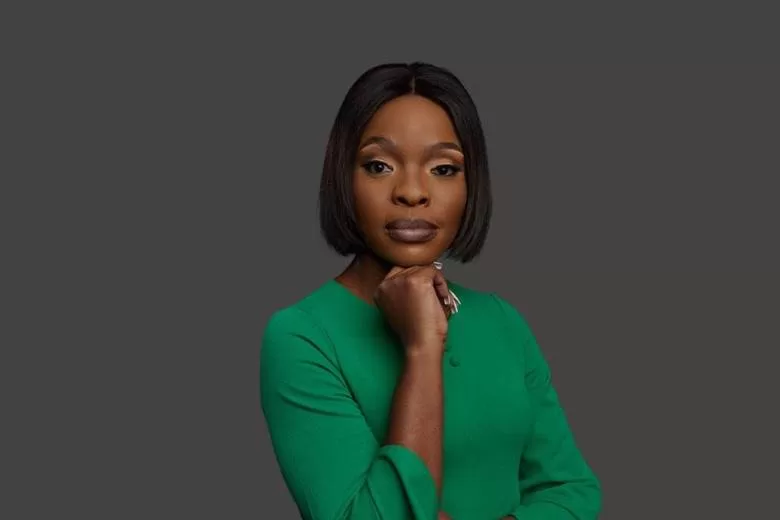Bringing the weather to South Africans in their mother tongue
Celebrating Queenstown weather anchor this Heritage Month
Former kids’ news presenter, Thabile Makapela, celebrates her IsiXhosa roots when she presents the weather on Newzroom Afrika’s daily Iindaba Zethu bulletins.

Hailing from Queenstown in the Eastern Cape, Makapela always knew she wanted a career in television, and since February this year, has been able to deliver content in her mother tongue.
“A highlight in my early career was interviewing then President Jacob Zuma, a truly mind-blowing experience in any young news anchor’s life.”
As an active mentor, her advice to upcoming journalists: Embrace who you are; and know and understand that you are unique and enjoy what you do.
Iindaba Zethu gives viewers access to diverse views to promote an understanding of the daily events – including the weather – that affect South Africa’s population. These could include information on inclement and dangerous weather warnings, such as the recent high winds and wild seas wreaking havoc along the country’s coastline.
Mzansi Wethu’s first IsiZulu and IsiXhosa language news bulletin, Izindaba Zethu/Iindaba Zethu broadcasts daily on DStv channel 163 at 19h00.
What led you to a career in news?
For as long as I can remember, I have always had a love for television, and this love led me to a career in news. I knew I belonged in broadcasting since my primary school days.
What is the most memorable news story you have covered in your career?
The most memorable story that I’ve covered in my career was when I was a kids’ news anchor and went to question the former President, Jacob Zuma. That experience was mind blowing, because as a young person in my early twenties, and still new in the news anchoring world, I did not expect to engage with someone so high profile. I was attending a story in Pretoria during Child Protection Week, and I was afforded the opportunity to interview the then President. I was excited and enjoyed all the attention that came with it, especially being a Kids’ anchor.
You have been an anchor on Indaba Zethu since it launched in February, how has that been?
Presenting on the show is so exciting, I look forward to each bulletin like it’s my first.
What makes anchoring in IsiXhosa authentic to you?
Presenting in isiXhosa makes it even more fun! It is my mother tongue so I can play around with the language while being informative.
Tell us about how working with the iconic veteran news anchor Dr Noxolo Grootboom has been? How has she mentored you?
Working with Dr.Noxolo Grootboom has been an experience that I’ll treasure forever. She has become more than just a mentor, more like a mother and a friend.
What is the legacy you would like to leave to the younger journalists rising up the ranks?
The legacy that I would love to leave to the younger journalists is to embrace who you are. Know and understand that you are unique and enjoy what you do.
Tell us about your hometown.
I am from Queenstown in the Eastern Cape and most of the people from the area do not consider media as a typical career path. I was a very active child and I’m grateful that my family and community gave me a platform that made me realise what I loved to do.
When you are not providing news to your fellow South Africans, what can you be found doing off camera?
When I’m not on TV, I can be found exploring my love for radio. I love public speaking and mentoring.
Pumza Sikhumba accurately keeps deaf IsiXhosa community updated with the latest news
Mdantsane news anchor interpreter has grown under Mam Nox’s mentoring wing
The job of reporting the news can be a challenging one, and journalists have a responsibility to the public to present stories which are accurate and authentic.

Pumza Sikhumba, Newzroom Afrika’s sign language Interpreter, feels the weight of the country’s deaf IsiXhosa community on her shoulders when she presents on Iindaba Zethu.
Hailing from Mdantsane in the Eastern Cape, Sikhumba’s most memorable news moment was when she covered the funeral of Nomzamo Winifred Zanyiwe Madikizela-Mandela. “I was kept on my toes, I felt I was making up to the deaf community for the sign language interpreter who caused an outcry with his poor interpreting skills at Nelson Mandela’s funeral.”
When she is not on television delivering the news, she interprets at police stations and hospitals as there is often still a big communication barrier in the deaf community.
Mzansi Wethu’s first IsiZulu and IsiXhosa language news bulletin, Izindaba Zethu/ Iindaba Zethu launched in February 2023, and broadcasts daily on DStv channel 163 at 19h00.
What led you to a career in news?
News is an exciting career, there’s always something happening somewhere which needs accurate conveying, and with my skills I felt like I would make a huge impact in the lives of the deaf community with the daily developments.
What is the most memorable news story you have covered in your career?
The most memorable news I have covered is the funeral of the mother of the nation, Nomzamo Winifred Zanyiwe Madikizela-Mandela. I was kept on my toes, in a way I think I felt I was making up to the deaf community for the sign language interpreter who caused an outcry with his poor interpreting skills at Nelson Mandela’s funeral.
You have been an anchor on Iindaba Zethu since it launched in February, how has that been?
The experience has been empowering and deeply satisfying, with an opportunity to learn as one engages with different stories and subject matters. It is a place of growth, learning and an environment that inspires excellence. I enjoy the feedback from our viewers and being part of a pioneering project is a once in a lifetime opportunity.
What makes anchoring in IsiXhosa authentic to you?
With isiXhosa being my mother tongue, I am at my most comfortable to express myself, to share ideas and relay information more accurately, in depth and informatively. My language is my identity which automatically connects me to my culture. As a South African Sign Language Interpreter (SASLI) anchor, I am able to accurately sign in isiXhosa and convey quickly to the audience what is truly being said, unlike when sources language one of the other official languages, as my thinking process is shorter.
Tell us about how working with the iconic and much-loved Dr Noxolo Grootboom has been? How has she mentored you in the past couple of months?
Mam Nox, as we affectionately call her, has been amazing and a blessing. Her experience and knowledge in the field is unmatched and it shows through her work when we engage. As a mentor she has such a kind and loving spirit, she is patient and deeply caring. She is someone you can speak to with ease as she relates to the work experiences and whatever the challenges we have or may face.
She has taught the importance of the team communicating with me as thoroughly as possible to ensure that the information that I deliver as an interpreter is accurate. I am motivated by the fact that she’s willing to understand and support me as a SASLI anchor. Working with her has challenged me to continuously do my best.
What is the legacy you would like to leave to the younger journalists rising up the ranks?
A legacy of excellence, competency, taking our job and craft very seriously. I would like to see more deaf people venturing into journalism because they have a better understanding of what is happening in and around the world. Seeing more trained media interpreters specifically in current affairs will fulfill me. “The songs of our ancestors are also the songs of our children” – Philip Carr-Gomm
Tell us about your hometown
I come from the Eastern Cape in Mdantsane, the second largest township after Soweto. We have 14 beaches in East London and as a result, the festive season is an extremely busy time filled with tourists.
When you are not providing news to your fellow South Africans, what can you be found doing off camera?
I interpret at police stations and hospitals quite often as there is still a big communication barrier in the deaf community. When I am not doing that, I am at home spending time with my children.





























